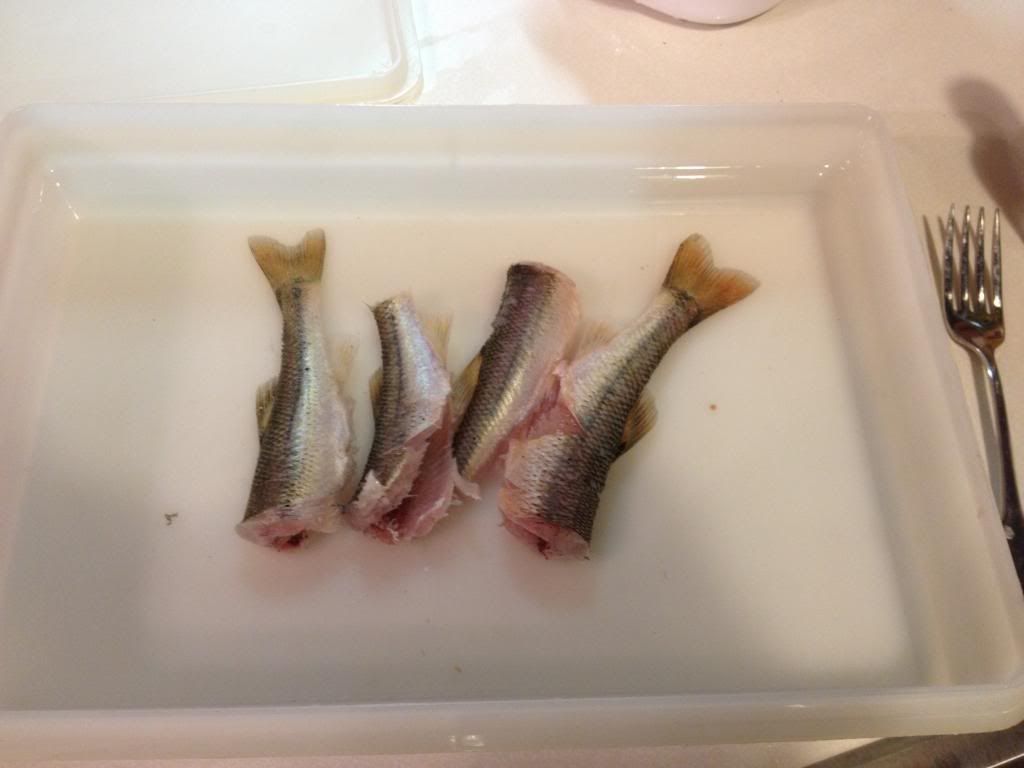Invasive Species or Native Species for human sustenance in degraded water bodies
#21
 Guest_Skipjack_*
Guest_Skipjack_*
Posted 14 October 2013 - 09:45 AM
I think your aquaculture idea would be great for meeting a family's protein needs, though it might be a hard sell to get the general population into eating emerald shiner sardines. I suppose fish patties would be another possibility.
#22
 Guest_centrarchid_*
Guest_centrarchid_*
Posted 14 October 2013 - 10:37 AM
That is where natives are a potential goldmine. Many of the smaller species are very palatable and easily adaptable to extensive culture methods, plus when they escape, which they will, you will not be dealing with an invasive. Going the extensive production route would also reduce pollution impacts associated with release of water during pond draining or heavy rain events.
#23
 Guest_Skipjack_*
Guest_Skipjack_*
Posted 14 October 2013 - 10:50 AM
#24
 Guest_centrarchid_*
Guest_centrarchid_*
Posted 14 October 2013 - 11:23 AM
#25
 Guest_Irate Mormon_*
Guest_Irate Mormon_*
Posted 14 October 2013 - 07:46 PM
#26
 Guest_Orangespotted_*
Guest_Orangespotted_*
Posted 14 October 2013 - 10:15 PM
#27
 Guest_gerald_*
Guest_gerald_*
Posted 15 October 2013 - 12:07 PM
#28
 Guest_centrarchid_*
Guest_centrarchid_*
Posted 15 October 2013 - 01:42 PM
#29
 Guest_Skipjack_*
Guest_Skipjack_*
Posted 15 October 2013 - 02:09 PM
We have really strayed from fish here, but I am enjoying the discussion. Hopefully none of the other moderators minds us having a bit of fun.
#30
 Guest_centrarchid_*
Guest_centrarchid_*
Posted 15 October 2013 - 02:58 PM
#31
 Guest_Skipjack_*
Guest_Skipjack_*
Posted 15 October 2013 - 03:29 PM
#32
 Guest_centrarchid_*
Guest_centrarchid_*
Posted 15 October 2013 - 03:50 PM
I have never intentionally consumed mosquito fish nor I have I seen them at high densities unless migrating through lowland channels. How do they taste?
Silversides (brook) are among my favorites. Inlands need to be tested because they can reach high abundances easily.
Combinations might also be worth looking into to divert more primary productivity into edible product. A lot of benthic productivity would not be converted by the middle to surface feeding species considered so far.
Edited by centrarchid, 15 October 2013 - 03:51 PM.
#33
 Guest_Skipjack_*
Guest_Skipjack_*
Posted 15 October 2013 - 04:06 PM
I have not tried Gambusia. I was thinking of them as an additional food source for golden shiners. I would expect that golden shiners would gladly eat Gam. fry.
There are limited species that would reproduce easily in a pond situation. You would want it to be simple. That is why golden shiners come to mind. Fathead minnows, and bluntnose would probably do fine. Not sure how well Notropis would do? Studfish? Mudminnow? Creekchub?
#34
 Guest_centrarchid_*
Guest_centrarchid_*
Posted 15 October 2013 - 04:34 PM
Redfins and studfish can breed in a but latter is not all that fecund. Mudminnow yes will breed in pond but will give only one cohort of offspring. If they taste good then it might be worth trying although not for me because they are not abundant here.
Creek chubs breed in beaver ponds in southern Indiana but may take a little tweeking to get them to go in a culture pond. They also will give only one cohort. What do they taste like?
#35
 Guest_Skipjack_*
Guest_Skipjack_*
Posted 15 October 2013 - 04:44 PM
I agree, Pimaphales do not seem appetizing. Not sure why.
I am sure under the right conditions many rough fish will taste surprisingly good. Common carp IMO is quite good, although pretty wasty. More gut than flesh. Grass carp is fantastic, though bony as heck, and difficult to clean. Honestly they are worth the time though, and these were caught mid-summer. I will eat them again for sure, but with a better plan for processing. If they were not so expensive to produce triploids, they would be a fantastic aquaculture species. The one that I have in my pond was caught and released this spring. It is 4 years old and though we did not weigh it, I am certain it was over 25 pounds.
#36
 Guest_centrarchid_*
Guest_centrarchid_*
Posted 15 October 2013 - 09:14 PM
#37
 Guest_Irate Mormon_*
Guest_Irate Mormon_*
Posted 15 October 2013 - 10:47 PM
Irate, how would you feel about eating roaches? Nice and crunchy, full of protein
Yes, well frogs are crunchy too, as long as you leave the bones in. I prefer them young, dew-picked, flown in from Iraq, and lightly killed.
#38
 Guest_Gavinswildlife_*
Guest_Gavinswildlife_*
Posted 17 October 2013 - 06:44 PM

Edited by Gavinswildlife, 17 October 2013 - 06:46 PM.
1 user(s) are reading this topic
0 members, 1 guests, 0 anonymous users







